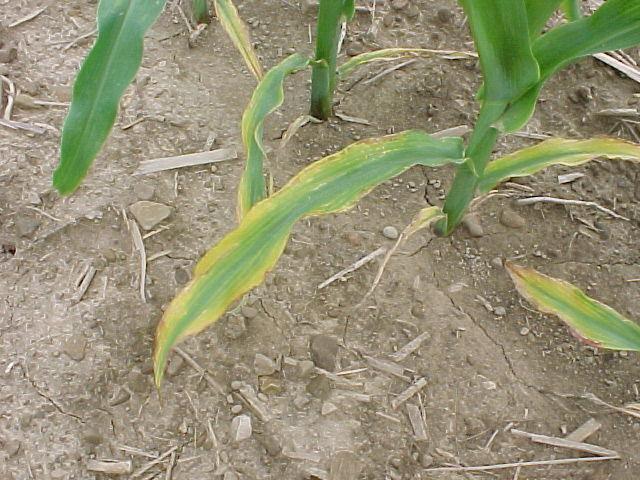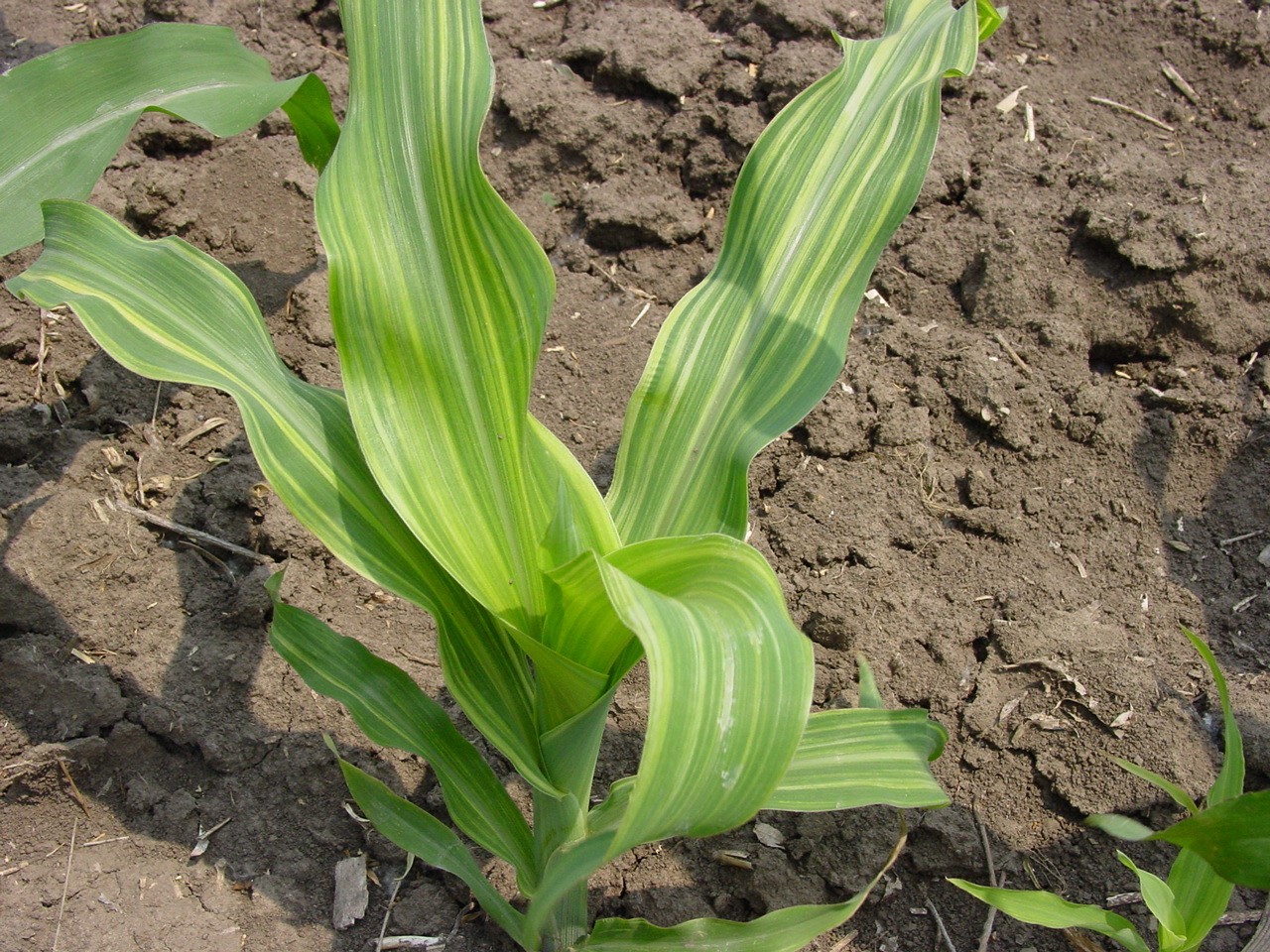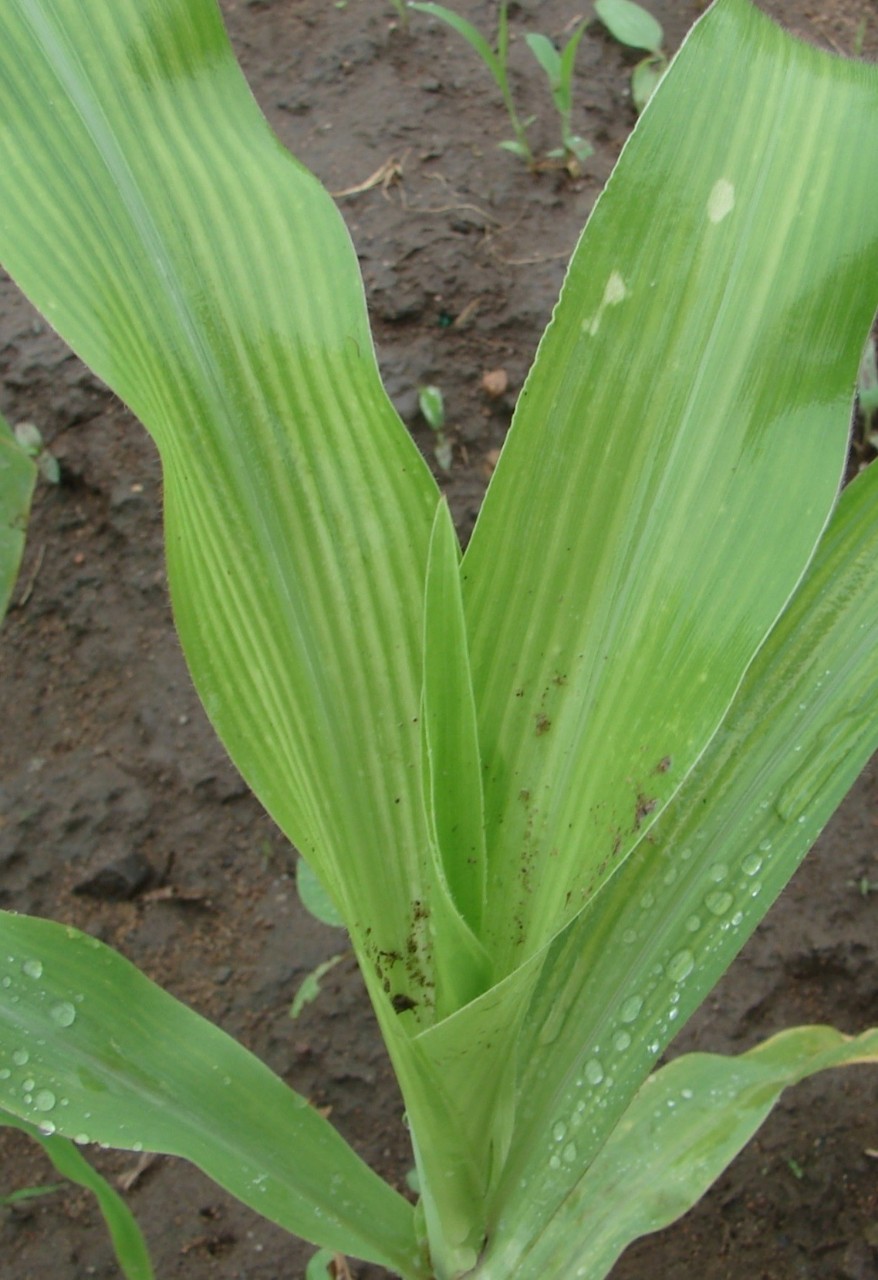Assessing soil nutrient levels and understanding nutrient availability is important to obtaining high corn yield potential. Advances in corn agronomic management practices, breeding, and biotechnology continue to have an impact on corn yield potential. Research suggests that corn products with transgenic insect protection, such as rootworm resistance, may have increased root growth leading to increased nutrient uptake and yield potential.1 This increase in nutrient use may lead to changes in fertilizer recommendations.
Soil Testing and pH
Managing soil fertility begins with soil testing. Soil test results help establish nutrient levels in the soil and provide locally calibrated fertilizer recommendations. Ideally, soil testing should be performed annually to help maximize corn yield potential. Soil testing should be performed at the minimum every three years. It is important to use a complete soil test to test for both macro and micronutrients levels in the soil and apply fertilizer to meet the corn crop requirements for all nutrients. Along with providing soil nutrient levels, soil testing assesses soil pH values which measure soil acidity or alkalinity that can greatly impact crop growth and nutrient availability. Optimal soil nutrient availability for corn occurs within a soil pH range of 6.0 to 7.0. When soil pH falls below 5.5, corn plants may show signs of nutrient deficiencies. Primary macronutrients (nitrogen, phosphorus, and potassium) and secondary macronutrients (sulfur, magnesium, and calcium) can become less available to corn plants in low soil pH environments. In addition to reducing nutrient availability, low soil pH can also increase the availability of aluminum and manganese, which can result in plant toxicity and possible plant death. (Figure 1).
 Figure 1. Nutrient availability based on soil pH. Image courtesy of Dr. Emerson Nafziger, University of Illinois.
Figure 1. Nutrient availability based on soil pH. Image courtesy of Dr. Emerson Nafziger, University of Illinois.
Fertilizer application can increase the probability of soil acidity.
Soil test results can be used to determine lime requirements for decreasing soil acidity. Soil testing laboratories use buffer pH to determine lime requirements. Buffer pH is a laboratory-derived value used to evaluate the ability of a soil to respond to liming. The larger the difference is between the original soil pH and buffer pH, the more responsive a soil will be to lime application, and the lower amount of lime required to raise soil pH. Lime is recommended to be applied in the fall to allow adequate time to neutralize soil acidity. If lime is unable to be applied in the fall, spring application is recommended.2
Corn Nutrient Use
Nitrogen (N) should be applied according to crop need. Two methods can be used to determine optimum nitrogen rates:
- Nitrate-nitrogen (NO3-N) soil test.
- General recommendations based on: expected yield, soil type, previous crop, corn heat unit (CHU) rating for location, N fertilizer cost, corn price and application timing.2
It is recommended to apply N two to three times per season depending on growing conditions and soil type. A split application can reduce the likelihood of N loss from leaching and denitrification during typical wet spring weather. Corn uses less than 10% of required N prior to rapid vegetative growth. To help maximize potential yield, most of the N should be applied prior to rapid vegetative growth, or around the V6 growth stage. Synchronizing N application timing with rapid N uptake by corn can help improve N use efficiency. A corn plant requires the most N at the V10 growth stage, which occurs about 40 days after plant emergence.3
Inadequate fertilization and/or leaching from heavy rainfall can result in N deficiency. Symptoms first appear on the lower leaves as an overall light green color. Yellowing then begins to appear at the leaf tip forming a v-shaped pattern proceeding down the midrib. Eventually, the yellow areas of the leaf may turn brown and die (Figure 2).2
 Figure 2. Symptoms of nitrogen deficiency in corn
Figure 2. Symptoms of nitrogen deficiency in corn
Phosphorus (P) can be applied either in the fall prior to tillage or in the spring depending on local conditions. The nutrient is nearly immobile in the soil and incorporation is recommended within the corn root zone. Strip tilling prior to planting may be an effective method to incorporate P deep into the root zone that can increase yield potential when compared to broadcasting similar rates of fertilizer in no-till systems.2 Corn often responds well to placing P in the root zone as a starter fertilizer at planting. P can be injected as a sidedress treatment to help the nutrient reach the corn roots, but care should be taken not to damage roots in the process. In general, newer corn products continue to uptake P throughout the reproductive stages, compared to older corn products that plateaued with the onset of reproduction.4
Phosphorus deficiency typically occurs in young corn plants after a period of cool soil temperatures. The developing corn roots are unable to uptake enough P for growth, resulting in P deficiency and delayed growth. Symptoms include dark green leaves and purple margins on older leaves with no symptoms on new, emerging leaves (Figure 3). When optimum growing conditions occur, roots continue to grow and uptake P resulting in symptoms fading and corn resuming normal growth.2
 Figure 3. Symptoms of phosphorus deficiency in corn
Figure 3. Symptoms of phosphorus deficiency in corn
Potassium (K) requirements are typically higher in production environments with heavy crop removal, such as alfalfa or corn silage production. Soybean rotations must also be considered as soybean seed production requires more K and can deplete the soil at a faster rate than other crops. Like P, K fertilizer may be applied in the fall as it is relatively immobile in the soil. Some leaching of K may occur in very sandy soils because there is not enough clay or organic matter particles to hold the readily available K. Sandy and organic soils often test relatively low in available potassium and can require potassium fertilization. A starter fertilizer may help improve N, P, and K availability, especially in conservation tillage systems.
Potassium deficiency can be observed on older leaves as chlorotic (yellow), then necrotic (dead) leaf tissue at the leaf tip and migrating down the leaf margins toward the stalk (Figure 4). Potassium is essential for the plant to move energy from the leaves for grain fill. Plants that are K deficient can be stunted with short internodes. Maturity can be delayed, and plants may frequently lodge or blow down late in the growing season.5 Because K may be recycled back into the soil through crop residue, deficiencies are common when crop residue is removed from the field.
 Figure 4. Symptoms of potassium deficiency in corn
Figure 4. Symptoms of potassium deficiency in corn
Other Important Nutrients and Considerations
High corn yield production can be accompanied with a substantial drop in soil nutrient levels, especially P, K, sulfur (S), and zinc (Zn).1 Manganese (Mn) can also have limited availability in some soils. Although the uptake of nutrients such as S, Zn, and Mn make up less than one percent of fertilizer applied to corn, they are critical for corn development and it is important to identify and manage nutrient deficiencies.6
Sulfur deficiency may occur more often in sandy, acidic soils that are low in organic matter. Cool and wet conditions usually found in the spring can also increase the chance of S deficiency. Symptoms include general yellowing, possibly with yellow-white intervein striping (Figure 5). Symptoms appear first on younger leaves as S is relatively immobile in the plant. Plants may also be stunted. If symptoms are a result of cool, wet soils, corn may recover as soon as soil conditions improve. Ear leaf sampling can help quantify a S deficiency.
 Figure 5. Symptoms of sulfur deficiency in corn. Photo is provided courtesy of the International Plant Nutrition Institute (IPNI) and its IPNI Crop Nutrient Deficiency Image Collection, Jashandeep Kaur
Figure 5. Symptoms of sulfur deficiency in corn. Photo is provided courtesy of the International Plant Nutrition Institute (IPNI) and its IPNI Crop Nutrient Deficiency Image Collection, Jashandeep Kaur
Like S, Zn deficiency also occurs more frequently in sandy soils with low organic matter during cool, wet conditions. However, unlike S deficiency, Zn deficiency is more common in high pH soils. Zinc is also relatively immobile in the plant, so symptoms appear on young leaves as whitish bands (interveinal chlorosis) that start at the base of the leaf and move toward the tips (Figure 6). Leaf margins and tips typically remain green. Symptoms may be observed several weeks after planting. Internodes may be shortened, but corn typically recovers once favorable conditions return. Tissue sampling can confirm a Zn deficiency, as it may be confused with a S deficiency.
 Figure 6. Symptoms of zinc deficiency in corn. Photo courtesy of the International Plant Nutrition Institute (IPNI) and its IPNICrop Nutrient Deficiency Image Collection, M.K. Sharma and P. Kumar
Figure 6. Symptoms of zinc deficiency in corn. Photo courtesy of the International Plant Nutrition Institute (IPNI) and its IPNICrop Nutrient Deficiency Image Collection, M.K. Sharma and P. Kumar
Manganese is often immobile in corn and can become deficient in high pH soils that may also be high in organic matter or are considered peat or muck soils. Manganese deficiency in corn is rare, although there have been a few occurrences reported on muck soils with high pH in Southwestern Ontario.2 Symptoms may be observed in younger plants as olive-colored streaks (Figure 7).3
 Figure 7. Symptoms of Manganese deficiency in corn. Photo courtesy of the International Plant Nutrition Institute (IPNI) and its IPNICrop Nutrient Deficiency Image Collection, M.K. Sharma and P. Kumar
Figure 7. Symptoms of Manganese deficiency in corn. Photo courtesy of the International Plant Nutrition Institute (IPNI) and its IPNICrop Nutrient Deficiency Image Collection, M.K. Sharma and P. Kumar
High-yield corn production environments have benefited from increased yield potential from biotechnology traits and rapid advancement in crop genetics. Changes in fertility should be considered to help maximize corn yield potential. It is important to fertilize according to soil test recommendations and sample soil annually to ensure adequate nutrients are available as soil may be depleted faster in high-yield environments. Soil and tissue analysis, nutrient removal, and realistic yield goals can be used to determine the amount of fertilizer needed. High yield potential can be realized when nutrients are applied according to recommendations and available when nutrient demands are highest.
Sources
1 Bender, R., Haegele, J., Ruffo, M., and Below, F. 2013. Nutrient uptake, partitioning, and remobilization in modern, transgenic insect-protected maize hybrids. Agronomy Journal 105: 161-170.
http://cropphysiology.cropsci.illinois.edu/.
2 2021. Agronomy guide for field crops Publication 811E. Ontario Ministry of Agriculture, Food and Rural Affairs.
http://www.omafra.gov.on.ca/english/crops/field/corn.html.
3 2021. Larson, E. and Oldham, L. 2008. Corn fertilization. Mississippi State University. Information Sheet 864.
https://extension.msstate.edu.
4 Hopkins, B. 2019. Phosphorus use in high yield cropping systems. Better Crops with Plant Food. A Publication of the International Plant Nutrition Institute (IPNI) http://www.ipni.net/publication/bettercrops.nsf/issue/BC-2019-1?OpenDocument&toc=1.
5 Corn Trouble Shooting. Manitoba.ca. Agriculture and Resource Development https://www.manitoba.ca/agriculture/crops/crop-management/grain-corn/corn-trouble-shooting.html.
6 Mallarino, A., Ottmaus, R., Prater, J., Villavicencio, C., and Thompson, L. 2011. Nutrient uptake by corn and soybean, removal, and recycling with crop residue. Iowa State University. 2011 Integrated Crop Management Conference: 103-113. http://www.agronext.iastate.edu.
Web sources verified 10/4/2021.
Legal Statement
Performance may vary from location to location and from year to year, as local growing, soil and weather conditions may vary. Growers should evaluate data from multiple locations and years whenever possible and should consider the impacts of these conditions on the grower’s fields.
Bayer and Bayer Cross are registered trademarks of Bayer Group. Used under license. ©2021 Bayer Group. All rights reserved. 1011_S9_CA